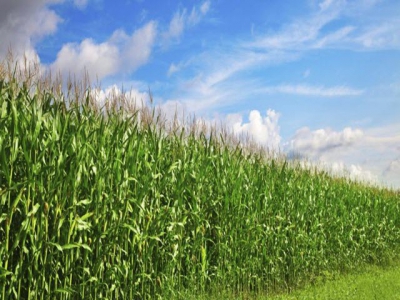Modern corn hybrids benefit from increased plant density

Thirty years of data link optimum plant density with yield gains for corn.
Photo by swisshippo/iStock/Thinkstock
A collaboration between Kansas State University and DuPont Pioneer Agronomy that analyzed 30 years of corn plant population responses shows that as agronomic optimum plant density increases, the range for maximizing yields also widens.
According to an announcement from Kansas State University, DuPont Pioneer has collected data on corn plant population responses and yield gains to provide better information on hybrids. From 1987 to 2015, nearly 200,000 yield and plant population data points were collected from more than 40 locations throughout North America.
In collaboration with DuPont Pioneer, the data were analyzed by Ignacio A. Ciampitti, an associate professor in crop production and cropping systems, and his team at Kansas State. Recently, the study was published in Scientific Reports and recognized for its discovery of trends in optimum plant density and yield gains, the university said.
The analysis's finding -- that as the agronomic optimum plant density increased, so did the range for maximizing corn yields -- means that modern hybrids benefit from increased plant populations without the previous instability that resulted from higher populations. Study findings showed a yield increase of 53 bu. per acre.
"It used to be that we were primarily achieving yield gains by improving the plant density tolerance, but there is evidence from this and other recent studies that we are seeing yield per plant increasing," DuPont Pioneer agronomy manager Paul Carter said.
According to Kansas State, the average agronomic optimum plant density across environments and hybrids increased from 30,500 plants per acre in 1987-91 to 37,900 plants per acre in 2012-16. During the first five years, the range of optimal agronomic plant density was very narrow, but this increased over time, the researchers said.
"This indicates that modern hybrids not only need more plants in order to push for higher yields, but also they are showing a stability that the old hybrids did not. For farmers, that means they have some leverage," Ciampitti said. "It's really unique to have this amount of data, from multiple sites, across that many years, in order to track plant density and its relationship to corn yields."
Over the duration of the study, the researchers said the average corn yield over all locations at the agronomic optimum plant density increased from 135 bu. per acre in 1987 to 188 bu. per acre in 2015, representing an overall yield gain of 53 bu. per acre. New elite hybrids are credited for these increases in yield per plant, the announcement said.
"These data show that yield gains might be due to increased planting density but also that yield per plant might have increased," said Stephen Smith, affiliate professor of agronomy at Iowa State University and retired research fellow at DuPont Pioneer. "If this is the case, then breeders will have found a level and class of genetic response that has mostly remained hidden. Additional studies will be needed to determine if there are additional genetic mechanisms at work contributing to yield. Hopefully, there are breeders who will be able to identify at least some of those and further increase that genetic contribution to yield gains."
Others involved in the study were Yared Assefa, postdoctoral researcher Ciampitti's lab at Kansas State, and Mark Hinds, Steve Paszkiewicz, Gaurav Bhalla, March Jeschke and Ryan Schon with DuPont Pioneer.
Có thể bạn quan tâm
Phần mềm

Phối trộn thức ăn chăn nuôi

Pha dung dịch thủy canh

Định mức cho tôm ăn

Phối trộn phân bón NPK

Xác định tỷ lệ tôm sống

Chuyển đổi đơn vị phân bón

Xác định công suất sục khí

Chuyển đổi đơn vị tôm

Tính diện tích nhà kính

Tính thể tích ao hồ




 Vietnam’s organic farming expansion faster than world average
Vietnam’s organic farming expansion faster than world average  Southern localities report bumper summer-autumn crop
Southern localities report bumper summer-autumn crop